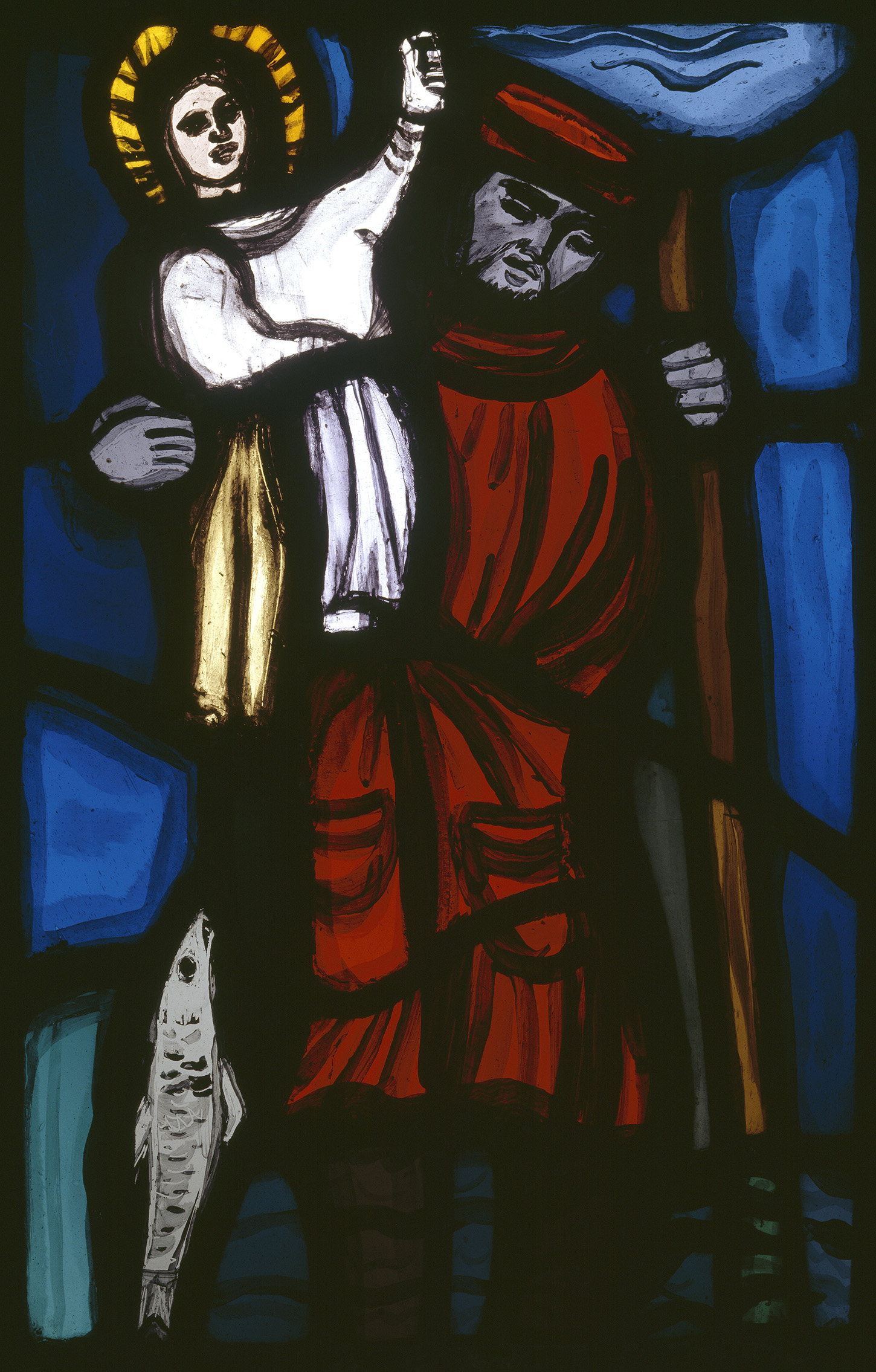Room 1
Brian O'Doherty (b.1928), Ogham on Broadway, 2003
- How would you describe this painting?
- Do you see the potential for a language to exist within it?
Ogham is an ancient Irish script made up entirely of vertical and horizontal lines. Here, Brian O’Doherty is combining this script with references to Piet Mondrian’s Broadway Boogie Woogie (1942–43), in which he created a kind of visual musical rhythm through lines and small black blocks.
- Can you see a rhythm in this painting?
Mondrian’s painting was on display in the Museum of Modern Art (MoMA), New York, while O’Doherty was living there in the 1960s. In this painting, from 2003, he is bringing an ancient Irish script to a contemporary American audience.
O'Doherty began working as a doctor in Ireland. In the late 1950s, he became an artist, critic, writer, filmmaker, and educator. He works in various media, including installation art. Throughout his career, O’Doherty has focused on aesthetic discourse, history, language, the self and the role of art institutions in displaying, promoting and elevating art.
His first performance work in 1972, called Name Change, saw him take on the artistic persona of Patrick Ireland, in protest against the killing of civil rights marchers in Derry. This became one of his most well-known artistic pieces. In 2008, he symbolically buried an effigy of Patrick Ireland on the grounds of the Irish Museum of Modern Art.
Explore further
 Evie Hone (1894-1955), Saint Christopher, c.1940s.
Evie Hone (1894-1955), Saint Christopher, c.1940s.

 Jack B. Yeats, About to Write a Letter © Estate of Jack B. Yeats, DACS London/IVARO Dublin, 2019. Photo © National Gallery of Ireland
Jack B. Yeats, About to Write a Letter © Estate of Jack B. Yeats, DACS London/IVARO Dublin, 2019. Photo © National Gallery of Ireland
 Mainie Jellett (1897-1944), Decoration, 1923. Photo © National Gallery of Ireland.
Mainie Jellett (1897-1944), Decoration, 1923. Photo © National Gallery of Ireland.
 Paul Henry (1876-1958), 'Launching the Currach', 1910-1911. © Estate of Paul Henry, IVARO, 2021.
Paul Henry (1876-1958), 'Launching the Currach', 1910-1911. © Estate of Paul Henry, IVARO, 2021.
 Walter Frederick Osborne (1859-1903), Dublin Streets: a Vendor of Books, 1889. Photograph © National Gallery of Ireland
Walter Frederick Osborne (1859-1903), Dublin Streets: a Vendor of Books, 1889. Photograph © National Gallery of Ireland
 Francis Danby (1793-1861), 'The Opening of the Sixth Seal', 1828. © National Gallery of Ireland.
Francis Danby (1793-1861), 'The Opening of the Sixth Seal', 1828. © National Gallery of Ireland.
 Mary Swanzy (1882-1978), Pattern of Rooftops, Czechoslovakia, c.1920-1922.
Mary Swanzy (1882-1978), Pattern of Rooftops, Czechoslovakia, c.1920-1922.
 Roderic O'Conor (1860-1940), 'Bretonne', c.1903-1904. © National Gallery of Ireland.
Roderic O'Conor (1860-1940), 'Bretonne', c.1903-1904. © National Gallery of Ireland.
 Brian O'Doherty (b.1928), Ogham on Broadway, 2003.
Brian O'Doherty (b.1928), Ogham on Broadway, 2003.
 Millennium Wing, featuring Louis le Brocquy's The Triumph of Cuchulaínn.
Millennium Wing, featuring Louis le Brocquy's The Triumph of Cuchulaínn.



